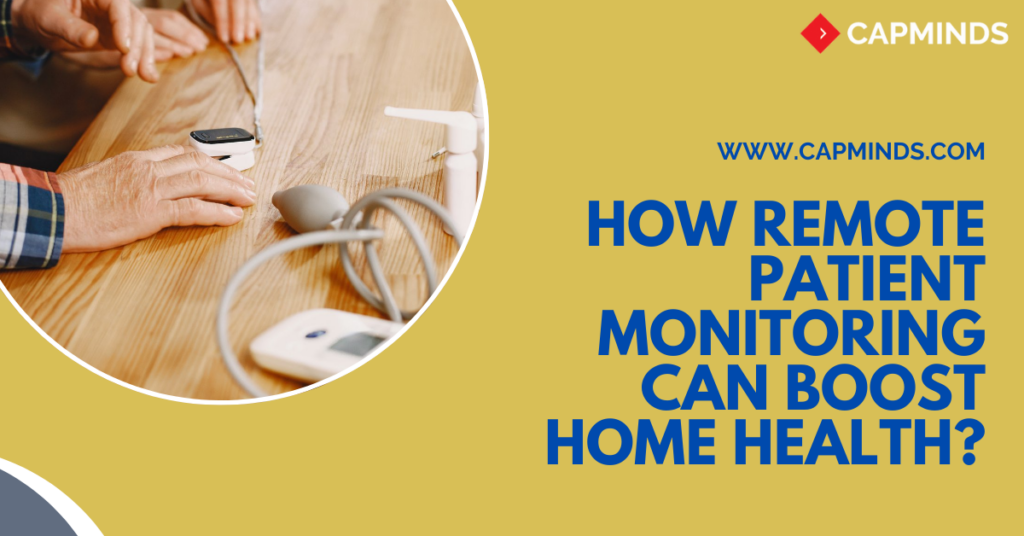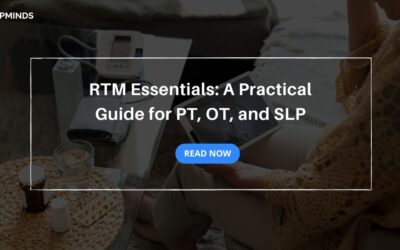How Remote Patient Monitoring Can Boost Home Health?
Digital health is the wave of the future in health care. We’ve heard many times that the COVID-19 pandemic brought telehealth greater popularity—but telehealth can’t do it all. While providers can “see” patients with a telehealth visit, they can’t check and monitor vital signs. The increased use of telehealth during the pandemic exposed some of the limitations of the technology. Vital sign readings such as blood pressure, temperature and oxygen saturation were missing from the conversation.
Remote patient monitoring (RPM) fills this gap, allowing for the collection of vital signs. The use of RPM accelerated rapidly when COVID-19 hit; patients could be monitored at home rather than make trips to the doctor’s office or health care facility, thus avoiding potential viral exposure. Yet RPM’s real purpose is for chronic care monitoring. RPM can connect patients to their care teams, providing the real-time data needed to control symptom and disease progression—and allowing them to remain in their homes longer.
How Remote Patient Monitoring Helps
Remote patient monitoring grew immensely during the COVID-19 pandemic as a way for providers to monitor less severe coronavirus patients at home, freeing up hospital beds for more severe patients.
A healthcare study recently released the results of an 11-month study that documents the value of monitoring patients at home. The study showed that of 13,000 COVID-19 patients monitored remotely at home from April 2020 through February 2021, only 10% needed to be admitted to the hospital. By monitoring patients’ oxygen saturation levels, providers were able to make treatment plan adjustments when a patient’s level ran low, thus avoiding hospitalization.
In addition, the study revealed that patients were satisfied with the quality of care they received and would recommend the program to others.
Although it was a study of COVID-19 patients, the study shows the value of RPM as an in-home health care delivery method for chronic care management and for acute care. Chronic and acute care patients often are sent home from the emergency room or hospital when they stabilize. Then, when their condition reaches a new crisis point, they may be readmitted. But if patients are monitored at home, providers can intervene before their condition reaches a crisis level.
Under an RPM program, the physician sets the target parameters for each patient’s vital signs, which patients take every day. An ideal RPM program triggers an alert if a patient’s vital signs register out of their normal range. These critical alerts serve as proactive intervention to address any health issues that arise, in an effort to keep patients out of the emergency room and prevent readmissions. This is better for the patient and helps keep costs down.
RELATED: ALL ABOUT REMOTE PATIENT MONITORING(RPM) DEVICES
Home Health Agencies & RPM
There is a consensus among health care providers on the benefits of real-time updates on a patient’s condition and timely feedback on their current status, thereby increasing patient engagement with providers. Home health agencies can incorporate RPM data to manage their patients’ care and achieve care plan goals.
Monitoring a patient between visits could alert the provider of a significant change in a patient’s health. For example, a congestive heart failure patient could experience weight gain over the course of a few days if their medications have been adjusted. The ability to see the change in real time allows for proactive intervention before the problem gets worse.
RPM can improve the care planning process when it is included in the care plan, along with an explanation of how the technology will help achieve the therapy plan’s goals. Remote patient monitoring is an additional tool and truly a valuable resource for providers in the continuum of care because they have access to daily vitals, much like a hospital setting, and can adjust the care plan based on the patient’s progress.
Some RPM systems also incorporate the ability to conduct a telehealth visit (with current vitals) if a provider needs to see the patient right away. For home health agencies, RPM is not only effective in the care plan of an individual patient, but can also be useful in determining the scheduling priority of a nurse’s visits on a daily basis.
RELATED: LEARN HOW TO DO REMOTE PATIENT MONITORING EFFECTIVELY
RPM Reimbursement for Home Health Agencies
In 2018, the Centers for Medicare & Medicaid Services (CMS) amended regulations to include the costs of RPM as an allowable administrative cost if RPM is used by a home health agency to augment the care planning process. By allowing the costs associated with RPM to be reported on the cost report, they can better determine the cost and frequency of use by home health agencies and whether it improves patient outcomes.
Despite the benefits of RPM, reimbursement is a challenge right now for home health agencies. The COVID-19 crisis accelerated the learning curve and increased user comfort with telehealth. The pandemic provided CMS the utilization data necessary to make the decision to continue allowing telehealth services after the public health emergency expires.
Remote patient monitoring is quickly being implemented across the country and will provide actual clinical data to impact decision-making in Washington and allow for greater use, including by home health agencies. The industry is hoping that CMS sees the value in the service—and in the outcomes—in the very near future.
Final Thoughts
Remote patient monitoring has an important role to play in health care and its future is a blank canvas waiting to be painted. COVID-19 played a role in expanding the potential opportunities and speeding the process to mainstream acceptance.
The reimbursement challenges that kept traditional telehealth services from surpassing a 1% market share are in the past. The accumulation and analysis of clinically relevant physiologic data and patient outcomes will validate the importance of RPM in the decision-making hierarchy of patient health care.
Home has already become an extension of the hospital, albeit with the addition of the convenience and comfort many have grown accustomed to in their daily lives. As such, the role of homecare providers has come to the forefront in care delivery.




